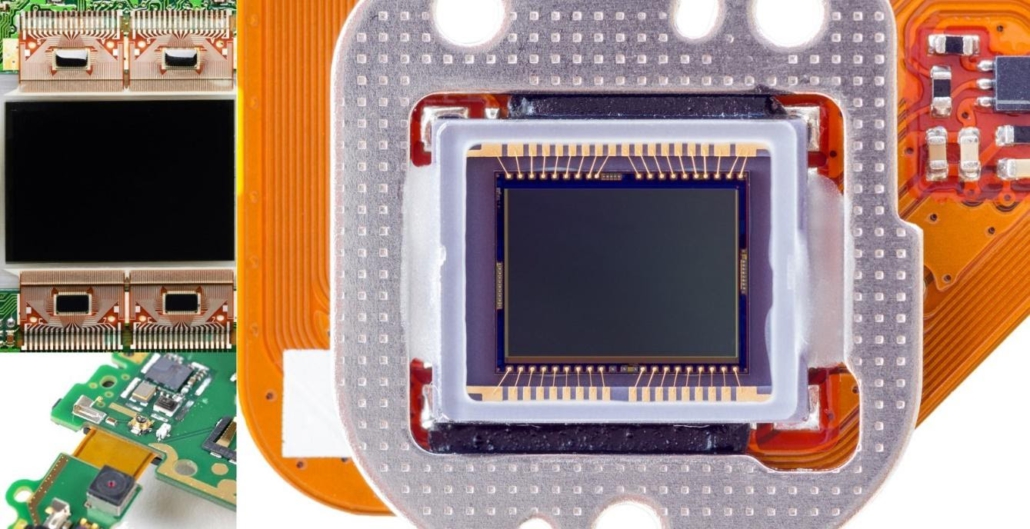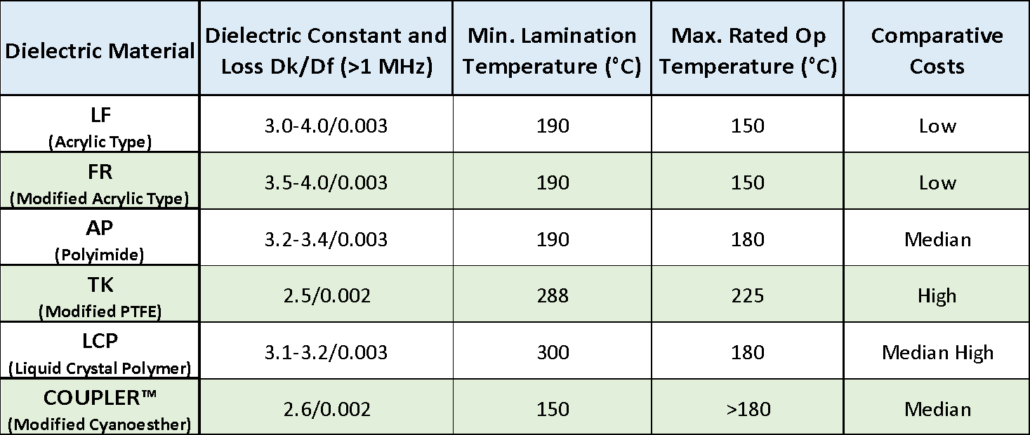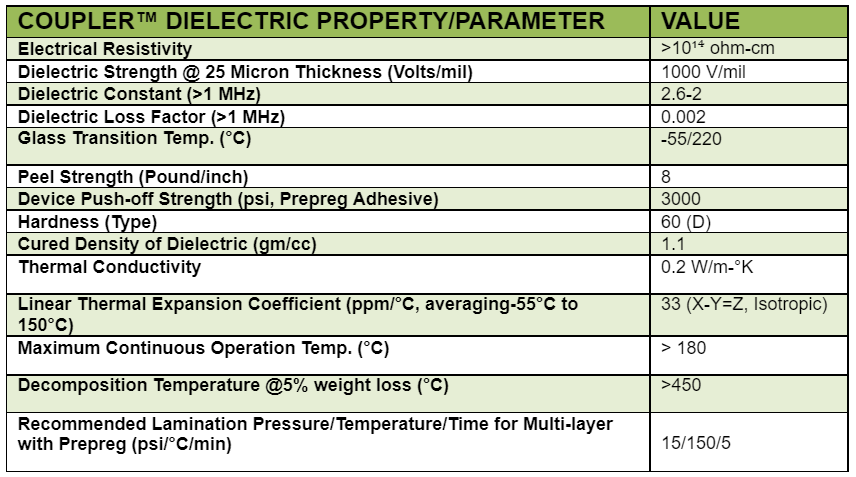COUPLER™ is a new class of copper-clad flexible circuit substrates to enable more versatile and high-speed flexible electronics
Flexible circuit substrates are the foundation for building highly reliable and performance flexible circuits or flex circuits for flexible electronics. Traditional flexible circuit substrates are based on polyimide and polyimide with acrylic-type adhesive. More recent use of high-temperature thermoplastics liquid crystal polymers such as PEEK and modified PTFE for specific enhanced performance.
While traditional polyimide-based and more recently adopted modified PTFE and LCP polymers have been evolved over time with proven performances, there are still limitations that are inherent in the substrate material characteristics.
- Low thickness copper flexible circuit substrates with polyimide are typically produced with vacuum deposition methods that are inherently high in costs for production and limited in high volume availability. Thus, the delivery time tends to be long and not very reliable.
- The use of acrylic adhesive on polyimide or modified PTFE while solving the production limitation, the inherent material properties of acrylic-based adhesive tend to lower the performance of the resulting flexible circuits and flexible electronics.
- Polyimide, acrylic-polyimide, and LCP polymers are inherently higher dielectric constant and higher moisture absorption for the millimeter-wave and microwave electronics at 5G and 6G frequencies.
Material Types Comparison for Copper-Clad Flexible Circuits
The following is a table of typical and representative material characteristics of the various flexible circuit substrates that are documented in various literature. AIT has developed its novel material solution, COUPLER™ flexible circuit substrate that is based on flexible cross-linked polymer chemistry that can be B-staged and cured into high flexibility and low in dielectric constant and loss.
COUPLER™ flexible circuit substrates are designed to provide the following benefits:
- It is inherently less limited in high volume production and availability with the capability to use very thin ½, ¼, and 1/8 oz on the flexible substrate (B-staged or cured) without the use of metal deposition method or having specialty interface adhesive such as acrylics. This method of production minimizes the volume limitation and costs of manufacturing. Of course, the standard copper foil such as 1 oz or higher thicknesses can also be produced without any additional adhesive layers.
- COUPLER™ flexible circuit substrates designed molecularly flexible with low polarity and thus low in dielectric constant and also low in moisture absorption that adversely affects the more polar traditional substrate such as polyimide and LCP polymer-based flexible circuit substrates as illustrated in the above Table of flexible circuit substrate characteristics.
- COUPLER™ designed different approaches in producing the flexible circuit substrates that enable the ease of producing high volume for single-sided, double-sided, and multilayer (prepreg) flexible circuits and electronics with high power (thicker copper layer) and fine-pitch (thinner copper layer) requirements.



